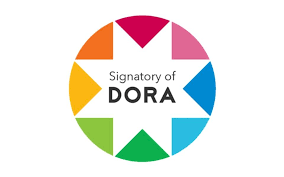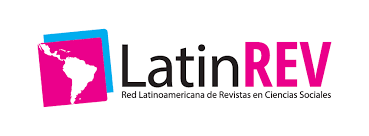Uso de sustancias psicotrópicas en pacientes infectados con el Virus de la Inmunodeficiencia Humana
Artículo de investigación
Palabras clave:
Sustancias psicotrópicas, sida, tabaco, alcohol, drogas ilegalesResumen
El consumo de sustancias psicotrópicas es un problema multifactorial; el alcohol, tabaco y la marihuana son las sustancias de mayor consumo en Ecuador en la población general y entre personas que viven con VIH-SIDA. El consumo de estas sustancias se asocia a la mala adherencia de los antirretrovirales y aumenta el riesgo de muchas condiciones. Por tanto, se evaluó el consumo de sustancias psicoactivas en personas que viven con el VIH-SIDA, mediante un estudio descriptivo, observacional y transversal. Se incluye a todos los pacientes con diagnóstico de VIH-SIDA que consumen PSU ingresados al hospital de infectología Dr. Daniel Rodríguez Maridueña de Guayaquil entre enero a diciembre de 2013; siendo la muestra 198 casos, empleándose historias clínicas, colectando múltiples variables como factores sociodemográficos, y laboratorio, donde la cohorte fue predominantemente masculina (63%), mestiza (86,5%), entre 30 y 44 años (53%), heterosexual (82%) de la provincia del Guayas (93%), el consumo más frecuente fue alcohol 43%, seguidos del tabaco 16,67%, drogas ilegales 8%; la media de CD4 fue de 235 células/mm3; además, existe asociación estadística entre el consumo de alcohol y el CD4+ < 200 células/mm3 con una p significativa de 0,002 y un Odd Ratio de 2,441 IC 95% 1,373-4,338. Se recomienda que un examen sistemático de las PSU y otras adicciones debe ser parte de la atención clínica de rutina.
Palabras clave: Sustancias psicotrópicas; sida, tabaco, alcohol, drogas ilegales.
Información del manuscrito:
Fecha de recepción: 04 de julio de 2020
Fecha de aceptación: 30 de septiembre de 2020
Fecha de publicación: 09 de enero de 2021
Descargas
Citas
CDC. (2016). Centro de prevención de enfermedades. Obtenido de https://www.cdc.gov/hiv/spanish/risk/substanceuse.html
Centros para el Control y la Prevención de Enfermedades. (2019). El VIH y el consumo de sustancias en los Estados Unidos. Atlanta. Obtenido de https://www.cdc.gov/hiv/spanish/risk/substanceuse.html
CICAD. (2019). Informe sobre el consumo de drogas en las Américas: OEA. Obtenido de http://www.cicad.oas.org/oid/Informe%20sobre%20el%20consumo%20de%20drogas%20en%20las%20Am%C3%A9ricas%202019.pdf
Courtney-Peasant, B.,, Browne, F., Ndirangu, J., Howard, B., Zule, W., Speizer, I., Kline, T., & Wechsberg, W. (2019) Exploring the associations between physical and sexual gender-based violence and HIV among women who use substances in South Africa: the role of agency and alcohol, AIDS Care, 31(11), 1369-1375. https://doi.org/10.1080/09540121.2019.1595512
De los Santos-Gil, I., Manzano-Luque, M., & Sanz-Sanz, J. (2014). Características de una población co infectada por el VIH y los virus de las hepatitis B y C por medio de los resultados de la elastografía de transición. Salud (i) ciencia, 357-361. https://www.siicsalud.com/dato/sic/204/134927.pdf
Elf, J. E. (2017). Prevalence and Correlates of Smoking Among. SRNT, 1124. Obtenido de https://watermark.silverchair.com/ntx145.pdf?token=AQECAHi208BE49Ooan9kkhW_Ercy7Dm3ZL_9Cf3qfKAc485ysgAAAjgwggI0BgkqhkiG9w0BBwagggIlMIICIQIBADCCAhoGCSqGSIb3DQEHATAeBglghkgBZQMEAS4wEQQMmMgtOmicIO1VFBqVAgEQgIIB62JFrstlzrdCZTU3gD40bWCnWpx-xYH_asmHbC9vQkCnCqZX
Gonzales Torres, E. (2015). Undertreatment of human immunodeficiency virus in psychiatric inpatients: a cross-sectional study of seroprevalence and associated factors. Neuropsychiatric Desease and treatment, 11, 1421-1426. Obtenido de https://apps.webofknowledge.com/full_record.do?product=WOS&search_mode=GeneralSearch&qid=1&SID=8EvpTDXLIrbqhOQthwF&page=2&doc=13
Infosida. (2018). Visión general de la infección por el VIH. Infosida. Obtenido de https://infosida.nih.gov/understanding-hiv-aids/fact-sheets/25/84/el-vih-y-los-usuarios-de-drogas-y-alcohol
Jacquet, J. M., Peyriere, H., Makinson, A., Peries, M., Nagot, N., Donnadieu-Rigole, H., ... & MesConsos Study group. (2018). Psychoactive substances, alcohol and tobacco consumption in HIV-infected outpatients. Aids, 32(9), 1165-1171. https://doi.org/10.1097/QAD.0000000000001830
Keen II, L., Abbate, A., Blanden, G., Priddie, C., Moeller, F. G., & Rathore, M. (2019). Confirmed marijuana use and lymphocyte count in black people living with HIV. Drug and alcohol dependence, 198, 112-115. https://doi.org/10.1016/j.drugalcdep.2018.11.018
Kiene, S. M., Sileo, K. M., Dove, M., & Kintu, M. (2019). Hazardous alcohol consumption and alcohol-related problems are associated with unknown and HIV-positive status in fishing communities in Uganda. AIDS care, 31(4), 451-459. https://doi.org/10.1080/09540121.2018.1497135
Kodidela, S., & Kumar, S. (2019). Choosing the right pharmacotherapeutic strategy for HIV maintenance in patients with alcohol addiction. Expert Opinion on Pharmacotherapy, 20(6), 631-633. https://doi.org/10.1080/14656566.2019.1574748
Lau, J. T., Tsui, H. Y., & Lam, L. T. (2007). Alcohol consumption, sex, and use of psychotropic substances among male Hong Kong-mainland China cross-border substance users. Addictive behaviors, 32(4), 686-699. https://doi.org/10.1016/j.addbeh.2006.06.013
Observatorio Social del Ecuador. (2016). El 46% de jóvenes de Ecuador cree que droga circula en su plantel. Guayaquil: El universo. Obtenido de https://www.eluniverso.com/noticias/2016/04/04/nota/5504028/46-jovenes-cree-que-droga-circula-su-plantel
Roux, P., Fugon, L., Michel, L., Lert, F., Obadia, Y., Spire, B., & Carrieri, M. P. (2011). Determinants of benzodiazepine use in a representative population of HIV-infected individuals: the role of HIV status disclosure (ANRS-EN12-VESPA study). AIDS care, 23(9), 1163-1170. https://doi.org/10.1080/09540121.2011.555738
Sinha, S., McCaul, M. E., Hutton, H. E., Monroe, A. K., Alvanzo, A., Lesko, C., ... & Chander, G. (2017). Marijuana use and HIV treatment outcomes among PWH receiving care at an urban HIV clinic. Journal of substance abuse treatment, 82, 102-106. https://doi.org/10.1016/j.jsat.2017.09.009
Zaruma-Pinduisaca, J. N. (2017). Síndrome de abstinencia aguda y el uso de drogas psicotrópicas en pacientes menores de 16 años. Estudio a realizarse en el Hospital Francisco de Icaza Bustamente, periodo 2015-2016. Universidad de Guayaquil, Ecuador. Obtenido de http://repositorio.ug.edu.ec/bitstream/redug/33290/1/CD%202116-%20ZARUMA%20PINDUISACA%20JENNY%20NATHALY.pdf
Descargas
Publicado
Cómo citar
Número
Sección
Licencia
Derechos de autor 2021 Revista Científica Multidisciplinaria SAPIENTIAE. ISSN: 2600-6030.

Esta obra está bajo una licencia internacional Creative Commons Atribución-NoComercial-CompartirIgual 4.0.


2.jpg)

















